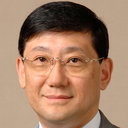A possible role of microglia-derived nitric oxide by lipopolysaccharide in activation of astroglial pentose-phosphate pathway via the Keap1/Nrf2 system.
Հիմնաբառեր
Վերացական
BACKGROUND
Toll-like receptor 4 (TLR4) plays a pivotal role in the pathophysiology of stroke-induced inflammation. Both astroglia and microglia express TLR4, and endogenous ligands produced in the ischemic brain induce inflammatory responses. Reactive oxygen species (ROS), nitric oxide (NO), and inflammatory cytokines produced by TLR4 activation play harmful roles in neuronal damage after stroke. Although astroglia exhibit pro-inflammatory responses upon TLR4 stimulation by lipopolysaccharide (LPS), they may also play cytoprotective roles via the activation of the pentose phosphate pathway (PPP), reducing oxidative stress by glutathione peroxidase. We investigated the mechanisms by which astroglia reduce oxidative stress via the activation of PPP, using TLR4 stimulation and hypoxia in concert with microglia.
METHODS
In vitro experiments were performed using cells prepared from Sprague-Dawley rats. Coexisting microglia in the astroglial culture were chemically eliminated using L-leucine methyl ester (LME). Cells were exposed to LPS (0.01 μg/mL) or hypoxia (1 % O2) for 12-15 h. PPP activity was measured using [1-(14)C]glucose and [6-(14)C]glucose. ROS and NO production were measured using 2',7'-dichlorodihydrofluorescein diacetate and diaminofluorescein-FM diacetate, respectively. The involvement of nuclear factor-erythroid-2-related factor 2 (Nrf2), a cardinal transcriptional factor under stress conditions that regulates glucose 6-phosphate dehydrogenase, the rate-limiting enzyme of PPP, was evaluated using immunohistochemistry.
RESULTS
Cultured astroglia exposed to LPS elicited 20 % increases in PPP flux, and these actions of astroglia appeared to involve Nrf2. However, the chemical depletion of coexisting microglia eliminated both increases in PPP and astroglial nuclear translocation of Nrf2. LPS induced ROS and NO production in the astroglial culture containing microglia but not in the microglia-depleted astroglial culture. LPS enhanced astroglial ROS production after glutathione depletion. U0126, an upstream inhibitor of mitogen-activated protein kinase, eliminated LPS-induced NO production, whereas ROS production was unaffected. U0126 also eliminated LPS-induced PPP activation in astroglial-microglial culture, indicating that microglia-derived NO mediated astroglial PPP activation. Hypoxia induced astroglial PPP activation independent of the microglia-NO pathway. Elimination of ROS and NO production by sulforaphane, a natural Nrf2 activator, confirmed the astroglial protective mechanism.
CONCLUSIONS
Astroglia in concert with microglia may play a cytoprotective role for countering oxidative stress in stroke.



